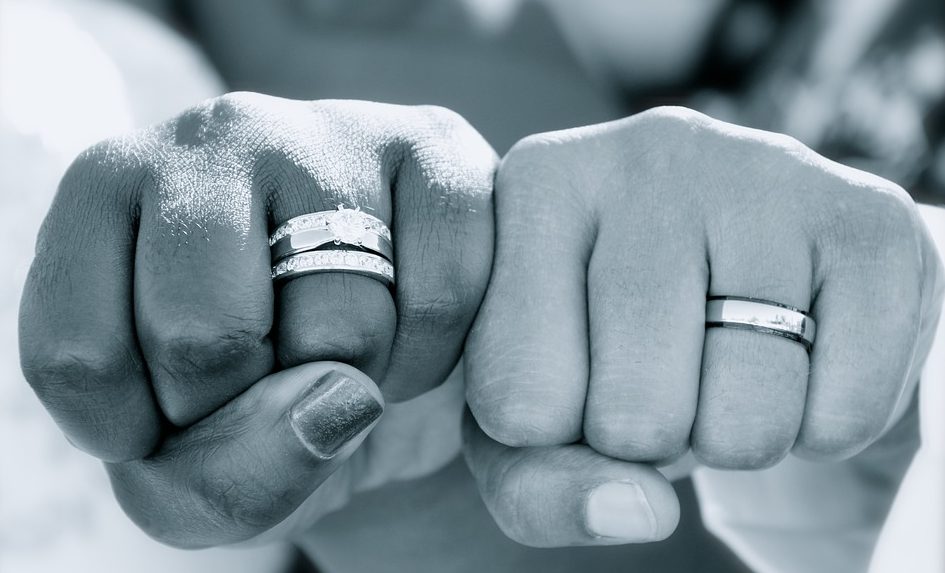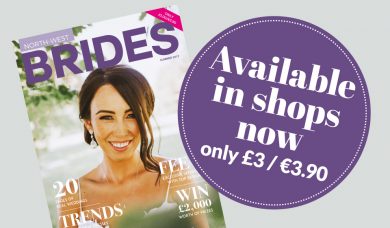Most couples shopping for wedding rings will be doing so for the first time. This is jewellery you intend to wear every day for the rest of your life – so this is one shopping trip you’ll both be taking pretty seriously. But where do you even start? You might know what you like the look of, but how do you know what you’re actually getting for all that money?
We’ve broken down the jargon, so your big decision is a well-informed one:

Cut
A confusing term, because you will hear it used to describe shape too. The cut of a stone refers to the proportioning, alignment and finish of its polished faces or facets. A well-cut diamond catches and reflects lots of light in a specific way, making it ‘sparkle’.
Shape
Any gemstone shape other than a circle is referred to as a ‘fancy’ shape. These range from oval to emerald and this is where you’ll hear the other use of ‘cut’ in relation to diamonds e.g. rose-cut, princess-cut, emerald-cut.

Clarity
Why is a ‘clear’ stone more valuable? Well, every gemstone contains tiny imperfections – so the greater the clarity, the better quality it’s considered to be. The Gemological Institute of America (GIA) created the Clarity Scale about 70 years ago, and grades diamonds into one of 11 categories ranging from Flawless (FL) to Included (I1, I2 and I3). It calls the impurities “inclusions”.
Flawless (FL) – No inclusions or blemishes are visible to a skilled grader using 10× magnification.
Internally Flawless (IF) – No inclusions and only blemishes are visible to a skilled grader using 10× magnification.
Very, Very Slightly Included (VVS1 and VVS2) – Inclusions are difficult for a skilled grader to see under 10× magnification.
Very Slightly Included (VS1 and VS2) – Inclusions are minor and range from difficult to somewhat easy for a skilled grader to see under 10x magnification.
Slightly Included (SI1 and SI2) – Inclusions are noticeable to a skilled grader under 10x magnification.
Included (I1, I2, and I3) – Inclusions are obvious under 10× magnification and may affect transparency and brilliance.
It’s thought most diamonds fall into either VS1 or VS2 – somewhere in the middle.

Colour
Each precious stone will have an ideal colour – the closer yours is to this ideal, the more valuable it is. Diamonds are rated alphabetically from the letter D for a totally colourless diamond, down to Z for a lightly-coloured diamond (which will have yellow tones visible). The most desirable emeralds are bluish green to pure green and highly transparent. Too much yellow or blue indicates lower quality.
Carat
This term describes the weight of the stone, with one carat equal to 0.2 grams. It’s often confused with karat – e.g. 24k gold – which refers to the purity of gold. Don’t be surprised if a one carat diamond is larger or smaller than another stone – there are variances in density to consider.

Setting
This is the part of the ring where the stone sits, or where it is set. It describes how your wedding ring band holds or clasps the stone(s) in place. There is a simple ‘prong’ setting, with small metal prongs holding a single diamond in place, and a gypsy setting, common in men’s rings, with a dome-shaped band of metal holding a single stone.
Metal
If you think you just have to decide between silver, gold and platinum, think again. Ceramic, tungsten, zirconium and palladium and even steel are popular materials, making the array of choices even more dizzying! As with your choice of stone, the metal you pick for the band will most likely be led by what you like the look of, combined with your budget.
Platinum is the most expensive but most hard-wearing, and steel is the least expensive whilst being hypoallergenic and scratch resistant. Tungsten is exceptionally strong and quite a heavy metal making it popular for men’s rings, but it can also be brittle – severe impact on a hard surface could fracture it.
By Heather McGarrigle, Excalibur Press








